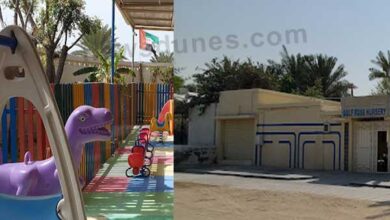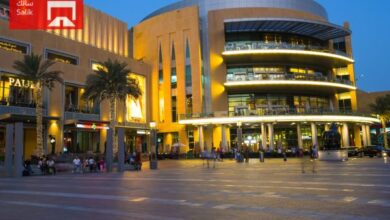Gulf
7 days ago
ഷാർജ ഇന്ത്യൻ സ്കൂളിൽ നേഴ്സറി അഡ്മിഷൻ ആരംഭിച്ചു
ബാലപാഠങ്ങൾ പഠിക്കാൻ പ്രായമായ കുട്ടികൾ ഉള്ള മാതാ പിതാക്കൾക്കുള്ള വാർത്തയാണിത്. ഷാർജ ഇന്ത്യൻ അസോസിയേഷന്റെ നിയന്ത്രണത്തിലുള്ള ഷാർജ ഇന്ത്യൻ സ്കൂൾ…
Jobs
3 weeks ago
ഇന്ത്യൻ ഇന്റലിജൻസ് ബ്യൂറോയിൽ ജോലി നേടാം
ഭാരത സർക്കാർ സ്ഥാപനമായ ഇന്റലിജൻസ് ബ്യൂറോയിൽ നിരവധി തസ്തികകളിലേക്കുള്ള ഒഴിവുകൾ പ്രഖ്യാപിച്ചു. 12 തരത്തിലുള്ള വിവിധങ്ങളായ പോസ്റ്റുകളിൽ ഭാരതത്തിലുടനീളം 660…
Jobs
3 weeks ago
ഷാർജ ഇന്ത്യൻ സ്കൂളിൽ തൊഴിലവസരങ്ങൾ
യു എ ഇ യിലെ ഏറ്റവും വലിയ കമ്യുണിറ്റി സ്കൂൾ ആയ ഷാർജ ഇന്ത്യൻ സ്കൂളിൽ നിരവധി തൊഴിൽ അവസരങ്ങൾ…
Jobs
4 weeks ago
ഇന്ത്യൻ ബാങ്കിൽ 146 ഒഴിവുകൾ
ഇന്ത്യയിലെ ദേശസാൽകൃത ബാങ്കുകളിൽ ഒന്നായ ഇന്ത്യൻ ബാങ്കിൽ 2024 വർഷത്തെ റിക്രൂട്മെന്റിന്റെ ഭാഗമായി 146 സ്പെഷ്യലിസ്റ് ഓഫീസർ തസ്തികകളിൽ ഒഴിവുകൾ…
Gulf
March 7, 2024
ഷാർജ അൽ ഇബ്തിസമ സെൻററിൽ നിരവധി ഒഴിവുകൾ
ഷാർജ ഇന്ത്യൻ അസോസിയേഷന്റെ കീഴിൽ പ്രവർത്തിക്കുന്ന ഭിന്നശേഷിക്കാരായ കുട്ടികളുടെ വിദ്യാഭ്യാസ സ്ഥാപനമായ അൽ ഇബ്തിസമയിൽ പുതിയ അധ്യയന വർഷത്തിൽ നിരവധി…
Gulf
March 4, 2024
റമദാൻ – യുഎഇ സ്വകാര്യ മേഖലയിലെ ജോലി സമയം കുറച്ചു
റമദാനിൽ യുഎഇയിലെ സ്വകാര്യ മേഖലയിലെ എല്ലാ ജീവനക്കാർക്കും പ്രതിദിനം രണ്ട് മണിക്കൂർ ജോലി സമയം കുറച്ചതായി മാനവ വിഭവശേഷി, എമിറേറ്റൈസേഷൻ…
Gulf
February 25, 2024
ഇന്ത്യക്കാർക്ക് 900 ദിവസത്തെ വിസിറ്റ് വിസ?
ബിസിനസ്സ് ആവശ്യങ്ങൾക്ക് ഇടയ്ക്കിടെ യു എ ഇ സന്ദർശിക്കുന്നവർക്കും, കുടുംബാംഗങ്ങൾക്ക് വീണ്ടും വീണ്ടും കണ്ടുമുട്ടാനും, പുതിയതായി അവതരിപ്പിച്ച 5 വർഷത്തെ…
International
February 25, 2024
നുഴഞ്ഞു കയറി 22 കോടിയുടെ വീഞ്ഞ് നശിപ്പിച്ചു
സ്പെയിനിലെ ഒരു വീഞ്ഞ് ഫാക്ടറിയിൽ നടന്ന സംഭവമാണ്. മുന്തിയ ഇനം വീഞ്ഞ് സംഭരണിയിൽ നിന്ന് 60000 (അറുപതിനായിരം) ലിറ്റർ ആണ്…
Jobs
February 21, 2024
ഇന്നത്തെ തൊഴിലവസരങ്ങൾ
1) ദുബായിലെ ഒരു ലോജിസ്റ്റിക് കമ്പനിയിലേക്ക് താഴെ പറയുന്ന തൊഴിലവസരങ്ങൾ ഉള്ളതായി പത്രമാധ്യമങ്ങൾ വഴി ഔദ്യോഗിക പരസ്യം നൽകിയിരിക്കുന്നു. ഒഴിവ്:…
Gulf
February 21, 2024
യു എ ഇ യിലെ നീറ്റ് പരീക്ഷ വിവരങ്ങൾ – ഫീസ് വിവരം
എൻട്രൻസ് പരീക്ഷ എഴുതാൻ നാട്ടിലേക്ക് ടിക്കറ്റ് എടുത്തവർക്ക് ഉൾപ്പടെ ആശ്വാസമായി NEET വാർത്താ കുറിപ്പ് ഇറങ്ങി. ഗൾഫ് ഉൾപ്പെടെ വിദേശരാജ്യങ്ങളിലെ…















